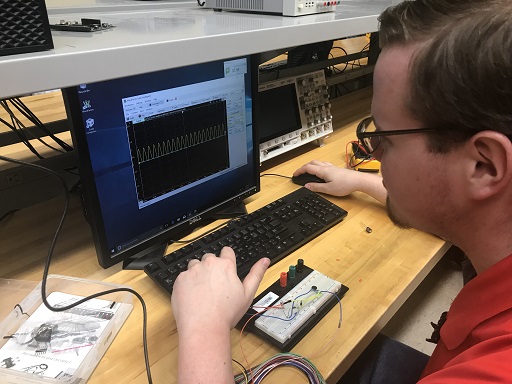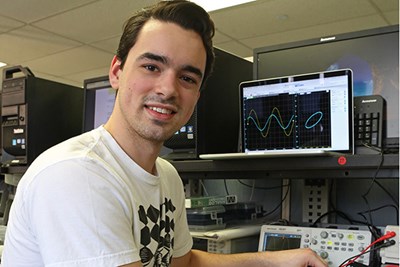The Analog Discovery 2 has a wide variety of different applications, and it is not uncommon for it to pop up in various use cases. Today, we are going to profile some interesting examples we have found!
- Analog Discovery 2 used in a biomedical instrumentation course :
“This paper describes the initial implementation of a wearable electrocardiograph project for a senior-level undergraduate biomedical instrumentation course sequence at Kansas State University. The project integrated circuit-level design concepts with makerspace tools consistent with the move toward personalized medicine.” - Teaching and learning semiconductor devices with Analog Discovery:
“This paper includes an introduction to the characteristics and uses of diodes and transistors will be considered, along with the types of analogue and digital circuits that can be created using diodes and transistors. The features of the Analog Discovery will be considered and its use in the development of PC based experiments that can be performed away from a traditional laboratory by the student will be discussed “ - Use of the Analog Discovery in EE courses to promote active learning”
“Integration of the Analog Discovery into undergraduate courses helps to align the electrical engineering curriculum with outcomes specified by the Accreditation Board for Engineering and Technology. Students’ scores on in-class projects and homework indicate proficiency with breadboarding, waveform generation, and instrumentation, well before they take their first formal electrical laboratory course. Also, end-of-course feedback from students indicates that they appreciate hands-on learning and see a direct link between classroom theory and practical implementation.”

Image from University of Kansas website.
Check out more examples at the links below!
- Using the Analog Discovery in upper level EE courses:
- Assessment of the Studio Learning format using Analog Discovery 2
To see even more examples please check out these books/articles about Analog Discovery 2 use on the following topics:

“Electrical engineering sophomore Michael Nuzzo works on his lab project using an earlier version of the Analog Discovery learning kit. The kit is at the heart of the “Laboratory Anywhere” teaching model, which allows students to run experiments, take extra time, innovate, tinker or create their own projects practically anywhere – residence halls, dining halls and even outdoors.” Image from University of Massachusetts Lowell,
https://www.uml.edu/Engineering/Research/Engineering-Solutions/lab-anywhere.aspx


I’d like to put in a plug for my course (Applied Electronics for Bioengineers) and the textbook I’ve written for it Applied Analog Electronics (https://leanpub.com/applied_analog_electronics). We use the AD2 extensively in a series of design labs that get students from 0 electronics to designing and building class-D power amplifiers and ECGs in only 20 weeks.